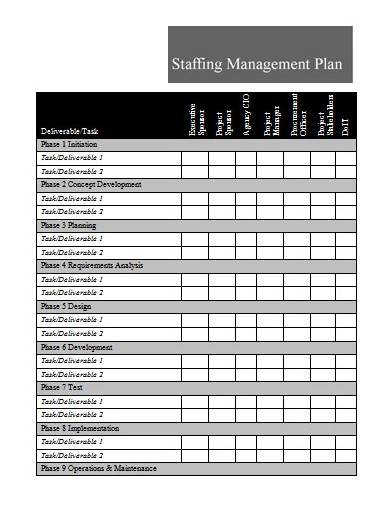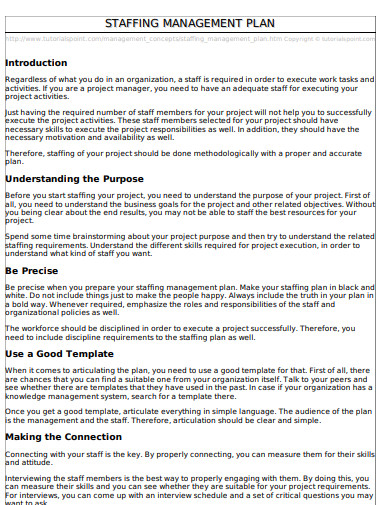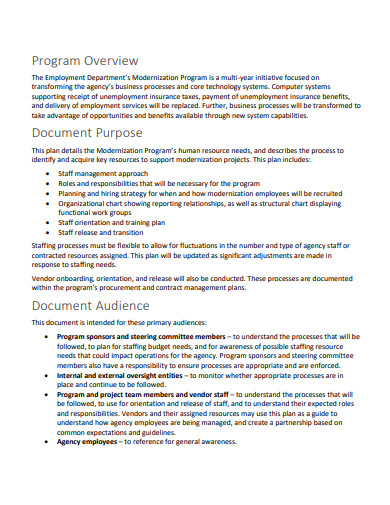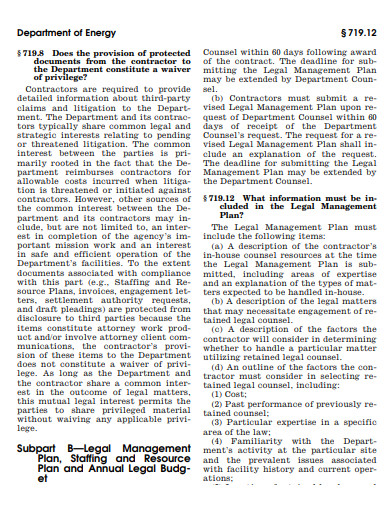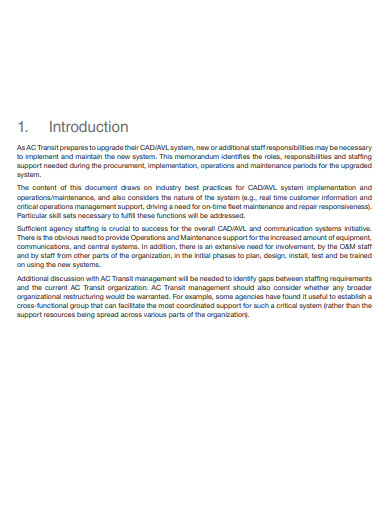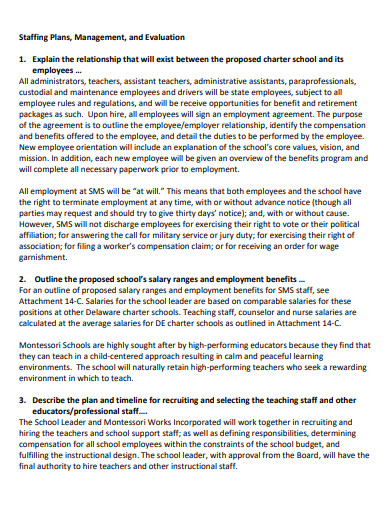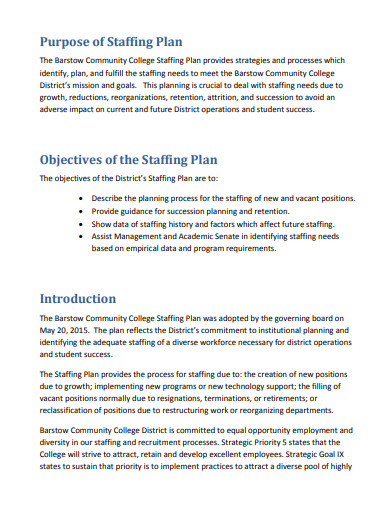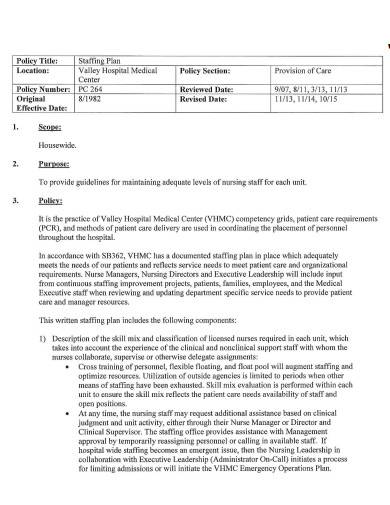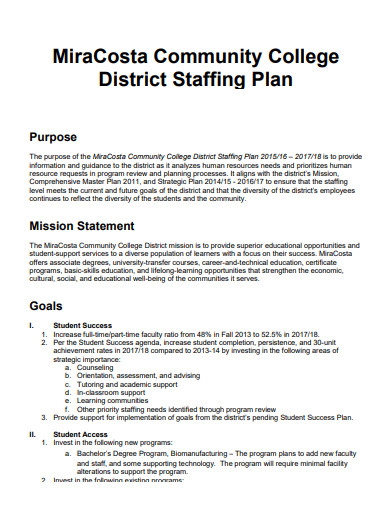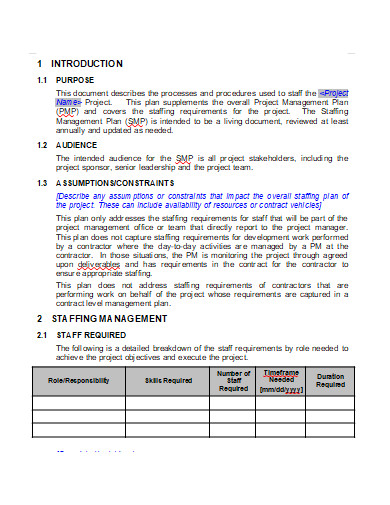You may have multiple operations running in your business at the same time in any given situation. It is essential to maintain control over all of these operations, and the management of a company is critical in ensuring that they are carried out smoothly. Managers must be two steps ahead of the game, preparing for any potential threats as well as anticipating upcoming changes. In order to accomplish this, a management plan must be put in place; otherwise, you become vulnerable to changing trends that can threaten our company’s survival. Management plans will assist in addressing a variety of issues, not only during the initial phases of an operation, but also throughout the course of the operation’s implementation.
A management plan is a blueprint for the way your organization is run, both day-to-day and over the long term. It includes the standard methods for doing various things — handling money, dealing with the actual work of the organization, addressing the way people in the organization do their jobs — and the overall philosophical and intellectual framework in which these methods operate. To put it another way, a management plan ensures that everything runs as smoothly as possible. The good news is that creating a management plan will assist you in streamlining and optimizing all of your processes. The bad news is that creating a management plan is something that most managers struggle with. But that’s exactly why we’re here: to ensure that you don’t fall into the same traps that the majority of managers fall into. So help you write a sound management plan on your own, check out these staffing management plan samples that we have provided down below. You can use these samples as guides or even templates for the entire writing process.
10+ Staffing Management Plan Samples
1. Staffing Management Plan

2. Sample Staffing Management Plan
3. Staffing Management Plan Example
4. Basic Staffing Management Plan
5. Legal Staffing Management Plan
6. Staffing and Resource Management Plan
7. Staffing Management and Evaluation Plan
8. Professional Staffing Management Plan
9. Hospital Staffing Management Plan
10. Community College Staffing Management Plan
11. Printable Staffing Management Plan
What Is a Staffing Management Plan?
A management plan is a comprehensive plan that outlines the objectives of a specific project, clearly defines roles and responsibilities, and includes other elements to ensure that the project is a success. Your management plan is a tool that can be used by everyone in the company to provide better direction. Management plans generally outline the goals and objectives of a company, the strategies that will be used to achieve those goals, and the methods that will be used to evaluate performance. No matter how large or small your organization is, the primary goal of your management plan will be to ensure that the organization operates as efficiently and effectively as it possibly can. A large number of processes must be handled at the same time in order for an organization to function smoothly.
Elements of a Staffing Management Plan
If you leave everything until the last minute, hoping that everything will work out when the problems arise, you will find yourself in serious trouble. So, in order to stay on top of daily tasks, deal with emergencies as they arise, and avoid letting projects slip through the cracks, you’ll need a management plan.
1. Executive Summary
An executive summary serves as the introduction to your management plan. The document provides a succinct synopsis of all the major components of the management plan. When writing the summary, try to be as concise as possible while keeping your main points in mind. Not every point needs to be covered in detail, but you must make certain that the most important ones are covered briefly. It is expected that people will be able to understand and comprehend this summary even if they do not read the entire management plan in its entirety.
2. Vision Statement
The following step is to include a reference to your vision statement. The vision statement is intended to serve as a guide to the organization, assisting it in making decisions that are consistent with its philosophy and stated goals. Vision statements are frequently confused with mission statements, but vision statements generally serve long-term objectives, whereas mission statements are more focused on the immediate future.
3. Mission Statement
When written clearly, the mission statement communicates exactly what your organization does and how it will be managed. The mission statement describes the purpose of the facility, including why it is being built, what services it will provide, and who will be using it. This will assist you in ensuring that your team is dedicated to the mission. The aspirations of the stakeholders are reflected in both the vision and the mission.
4. Goals
Once the mission and vision statements have been established, the next step is to determine how they will be achieved in practice. It is critical to identify the objectives that will assist you in achieving your mission. Goals reflect what you hope to accomplish and serve as a guide for the rest of your organization.
5. Key Performance Areas
During the course of the management plan’s execution, key performance areas (KPA) are focused on general areas of operation within an organization in which the desired outcome is required. There are numerous key performance areas in your organization, and you must address each of them individually in your presentation. Marketing, administration, finance, and human resources are just a few of the key performance indicators.
6. Mention policies and procedures
In order to formalize the operations across your organization, you must put in place policies and procedures that are followed. This contributes to the creation of consistency and cohesion in the workplace. Work hours, dress codes, leave policies, and other policies can be included, depending on the needs and size of your organization. Take your time when defining policies, and don’t rush it.
7. Future Considerations
Every business is constantly threatened by the possibility of a surprise. As a result, you must base all of your certain future projections on these unsolved problems.
8. Revisit your plan
Due to the fact that it is a representation of what your organization represents, your management plan must be extremely professional and free of any mistakes. Verify that there are no typos and have someone else look it over and proofread it. Make sure that each owner receives a copy of the document. They may also provide you with edits and revisions. Take all of this into consideration and develop a powerful, fail-proof management strategy.
FAQs
How important is a management plan?
A good management plan can assist you in achieving your objectives in a variety of ways, including: It clarifies the roles and responsibilities of everyone in the organization, ensuring that everyone understands what she and everyone else is expected to do in their respective roles. Staff members are aware of whom they should contact for information, consultation, supervision, and so on.
What are the 4 types of planning?
- Operational Planning
- Strategic Planning
- Tactical Planning
- Contingency Planning
What are the 4 basic functions of management?
Henri Fayol first came up with five elements of management: planning, organizing, leading, and controlling. There are now four common functions of management that include these skills: planning, organizing, leading, and controlling.
There will be times when things happen that aren’t normal. You’ll be ready for these times, and your employees will be ready for their jobs. Creating a management plan without an easy-to-use and powerful tool can be too much for anyone. Today, we don’t want to read boring management plans. We want something that’s interesting and interesting. How could you do that?
Related Posts
FREE 9+ 30-Day Marketing Plan Samples in PDF | MS Word | Apple Pages | Google Docs
FREE 3+ Sales Team Action Plan Samples in PDF | MS Word | Apple Pages | Google Docs
Marketing Plan For Small Business Samples
FREE 7+ Fashion Business Plan Samples in PDF
FREE 10+ Sprint Planning Samples In MS Word | Google Docs | PDF
FREE 10+ Wedding Planning Samples in MS Word | Apple Pages | Powerpoint | PDF
FREE 9+ Monthly Study Planner Samples in PSD | Illustrator | InDesign | PDF
FREE 9+ Sample Curriculum Planning Templates in PDF | MS Word
FREE 10+ Teacher Development Plan Samples in MS Word | Google Docs | Apple Pages | PDF
FREE 10+ Basketball Practice Plan Samples in PDF
FREE 12+ School Business Plan Samples in PDF | MS Word | Apple Pages | Google Docs
FREE 7+ Client Strategic Plan Samples in PDF | MS Word
FREE 11+ Trucking Business Plan Templates in PDF | MS Word | Google Docs | Pages
FREE 7+ Small Hotel Business Plan Samples PDF | MS Word | Apple Pages | Google Docs
FREE 14+ Bakery Business Plans in MS Word | PDF | Google Docs | Pages

